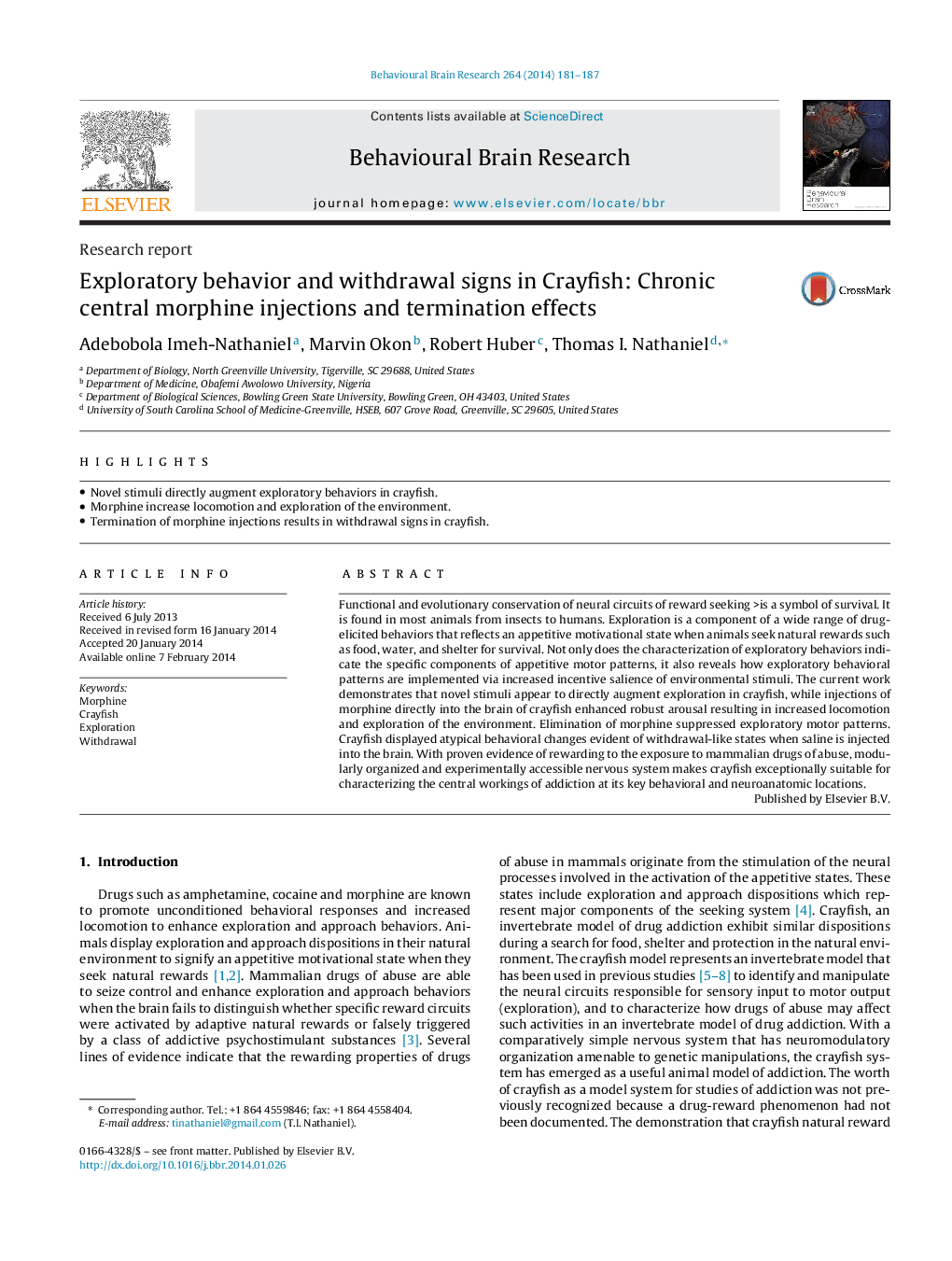| کد مقاله | کد نشریه | سال انتشار | مقاله انگلیسی | نسخه تمام متن |
|---|---|---|---|---|
| 6258268 | 1612968 | 2014 | 7 صفحه PDF | دانلود رایگان |
- Novel stimuli directly augment exploratory behaviors in crayfish.
- Morphine increase locomotion and exploration of the environment.
- Termination of morphine injections results in withdrawal signs in crayfish.
Functional and evolutionary conservation of neural circuits of reward seeking >is a symbol of survival. It is found in most animals from insects to humans. Exploration is a component of a wide range of drug-elicited behaviors that reflects an appetitive motivational state when animals seek natural rewards such as food, water, and shelter for survival. Not only does the characterization of exploratory behaviors indicate the specific components of appetitive motor patterns, it also reveals how exploratory behavioral patterns are implemented via increased incentive salience of environmental stimuli. The current work demonstrates that novel stimuli appear to directly augment exploration in crayfish, while injections of morphine directly into the brain of crayfish enhanced robust arousal resulting in increased locomotion and exploration of the environment. Elimination of morphine suppressed exploratory motor patterns. Crayfish displayed atypical behavioral changes evident of withdrawal-like states when saline is injected into the brain. With proven evidence of rewarding to the exposure to mammalian drugs of abuse, modularly organized and experimentally accessible nervous system makes crayfish exceptionally suitable for characterizing the central workings of addiction at its key behavioral and neuroanatomic locations.
Journal: Behavioural Brain Research - Volume 264, 1 May 2014, Pages 181-187
